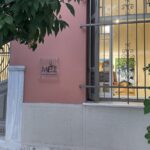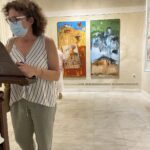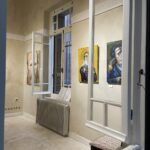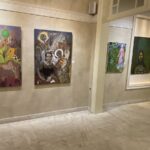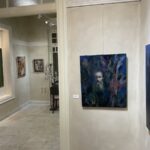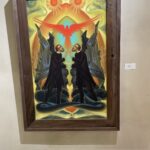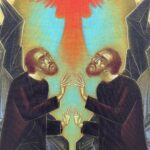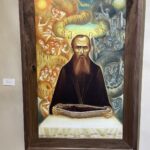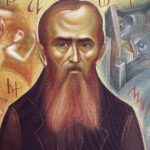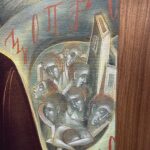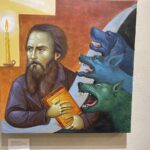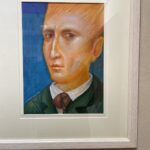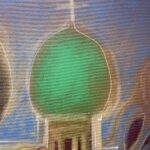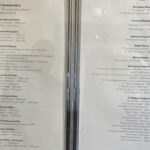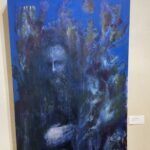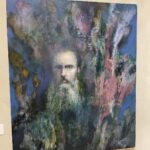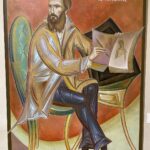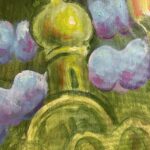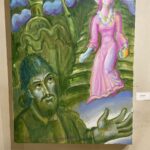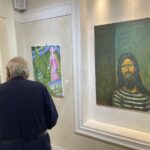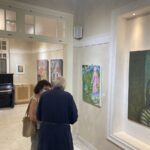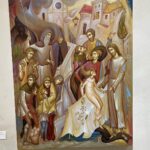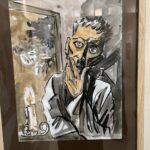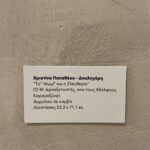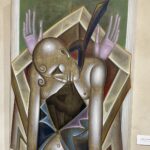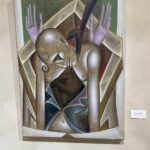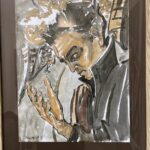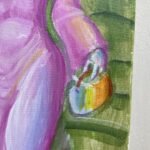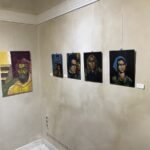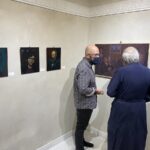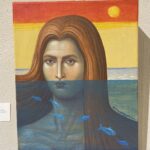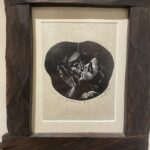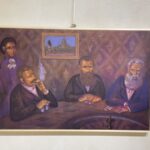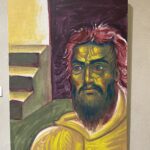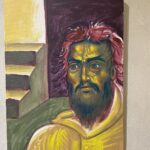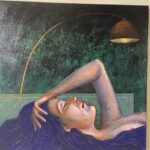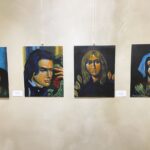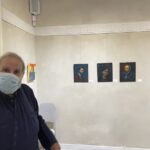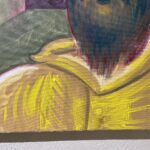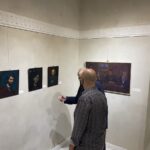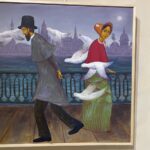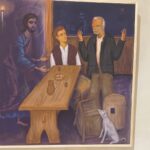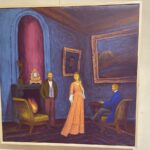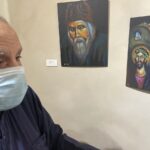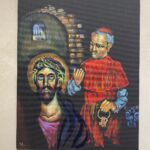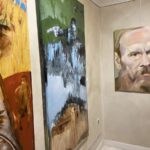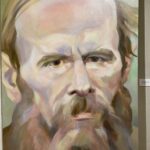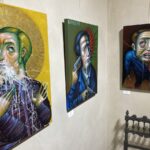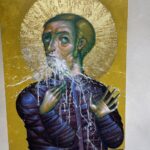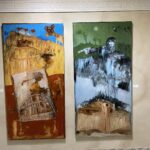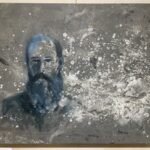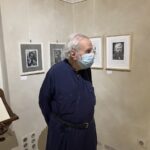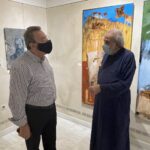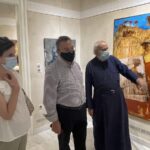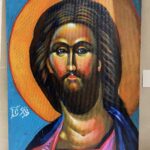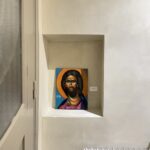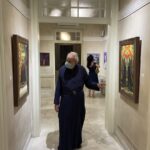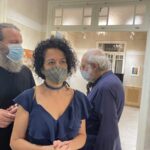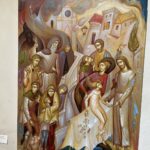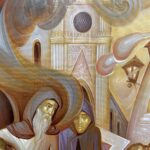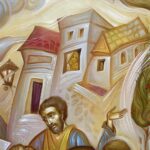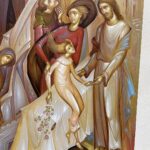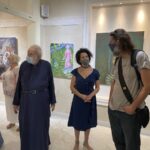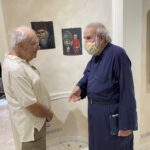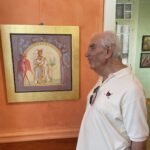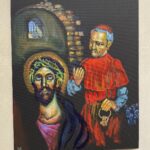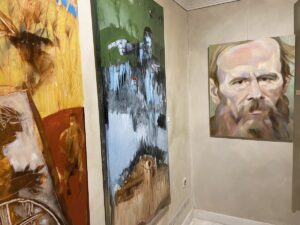 “THE DREAM OF A RIDICULOUS MAN”
“THE DREAM OF A RIDICULOUS MAN”
A Visual Tribute to the 200th Anniversary of the Birth of Fyodor Dostoevsky (1821-2021)
Painting exhibition of the group “OCHRE” in the METS Art Gallery, 6 Eugeniou Voulgareos in METS, Athens, September 17, 2021.
“OCHRE” is an informal group of painters, who have contributed to the traditional Orthodox iconography but at the same time are in dialogue with the modern artistic trends. The exhibition is organized with great passion by the 16 artists and has exceeded all expectations.
In principle, the exhibit is characterized by great pluralism. It hosts various currents and artistic trends, which are in a harmonious dialogue with each other. One sees Byzantine elements conversing with impressionist, expressionist, cubist, abstract, as well as features of street art, graffiti, etc.
The works emit a deep study and understanding of Dostoevsky’s novels. It is very important that young painters have so seriously studied the great writer and philosopher at a time when electronic images and soap operas distract readers from great and essential works and wither Literature.
It is obvious that we have before us an important robust and fruitful spiritual event, which will be a station for the artistic events in Greece and it is not excluded that its message will spread to other countries.
The following artists participate: Fr. Stamatis Skliris, George Kordis, Fr. Maxim Vasiljevic, Babis Pylarinos, Costas Lavdas, Maria Panou, Giannoulis Lymperopoulos, Nektarios Mamais, Fotis Varthis, Konstantinos Kougioumtzis, Christos Kechagioglis, Nektarios Stamatelos, Gordana Radogievich, Despina Karantani, George Margaritis, Christina Papatheou-Douligeri
Fr. Marko Bojovic on the Exhibit of Dostoevsky’s Heroes in Athens
A wonderful idea has given birth to a delightful fruit.
In our time, when there is a tendency to rob everything of their original meaning and purpose, this exhibit appears as an oasis of the Logos and a festival of the Spirit.
Christ humbly, from a small icon in an embedded corner, which is, nonetheless, the beginning and the end, gives all the works His theanthropic gaze establishing thus a meaningful and loving order in them and among them.
Through Fyodor (Russian pronunciation of Theodore) God (Theos) offers Himself to us as a gift (doron). It is hard to tell what is a greater surprise: through whom or to whom He offers Himself—in how fragile vessels He is willing to abide.
The appearance and presence of Father Stamatis at the exhibit space brings me to a dilemma whether he or his paintings are more faithful witness to the Beauty which will save the world. In fact, I realize they cannot be viewed separately.
Each of the authors, touched by the flame of inspiration, speaks of the same using a different tongue, in order to invite us to the unity and community of the Pentecost. It is as logical as the dream of a ridiculous man,
as the Brothers Karamazov, the cubism in Orthodox iconography or Dostoyevsky in Athens.
This logic transcends the fallen, calculated “logic”, which enslaves. Compared to that “logic”, this one is non-logical for it is the logic of the Logos, the logic of Love, which sets us free and hence it is compellingly and essentially needed, as therapeutic and salvific.
At this small center (Kentro tehnon) of cosmic outreach, as a meeting place for liturgy after liturgy, the culture stemming from the experience of the cult, is offered to the suffering world without preaching, but rather compassionately. By its blessed mission even the disfigured and abused words such as “technical” and “technology” are redeemed and given back their pristine meaning and beauty.

